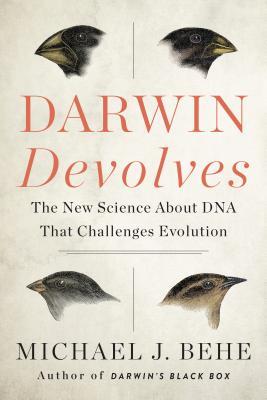What do you think?
Rate this book


333 pages, Kindle Edition
First published February 26, 2019
Darwin did not show that apparently purposeful systems could be built by natural selection acting on random variation. Rather, he just proposed that they might. His theory had yet to be tested at the profound depths of life. In fact, no one then even realized life had such depths. Darwin built a case with the best science available in the nineteenth century. The case was pretty strong for a few of his theory’s multiple aspects, including the descent of modern organisms from earlier ones. It was extremely weak for his proposed mechanism of evolution. A major reason for its weakness is that the science of Darwin’s day had no understanding of the molecular foundation of life. Only now, only within the past twenty years has science advanced sufficiently to examine life in the molecular detail necessary to rigorously test Darwin’s ideas. (pp. 255-256)
Darwin’s last theory—call it the ‘theory of natural coherence’—is the presumption that repeated rounds of random variation and natural selection would, by a succession of separate steps, build elegant compound interactive biological systems. (p. 89)
[N]either neutral theory nor complexity theory, neither the ideas of the extended evolutionary synthesis nor the latest Darwinian innovations—none of them even try to account for the sophisticated machinery of life. None even try to account for the purposeful arrangement of parts. (p. 137)
The amazing but in retrospect unsurprising fact established by the diligent work of many investigators in laboratory evolution over decades is that the great majority of even beneficial positively selected mutations damage an organism’s genetic information—either degrading or outright destroying functional coded elements. (p. 183)
Degrading machinery can be useful for some purposes—perhaps because its function is unneeded at the time, and so the scrapped machine doesn’t waste energy; or because in changed circumstances the product the machine made is now detrimental; or some other reason. But natural selection can’t build a coherent new system. (p. 201)
It's critical to keep in mind that the concept of purposeful design is logically entirely separate from the idea of common descent - the idea that all organisms living today are descended from organisms that lived in the distant past. Some religious groups are opposed in principle to the idea of common descent. I am not... I think the evidence supporting descent is strong, and I have no reason to doubt it... the design argument here is not that one higher [than family] category cannot descend from another through intermediates. Rather, the argument is that one higher category cannot descend from another by means of an unplanned process such as Darwin's mechanism. (p 157, emphasis original)I learned a few things but, while Behe claimed to write this book so it would be accessible to as many people as possible, I am here to declare that it is too technical for many readers. I like science, biology in particular, and I had a hard time with all the scientific terms and such.
Gratuitous affirmations of a dominant theory can mesmerize the unwary. They lull people into assuming that objectively difficult problems don't really matter. That they've been solved already. Or will be solved soon. Or are unimportant. Or something. They actively distract readers from noticing an idea's shortcomings. "Of course," students are effectively prompted, "everyone knows what happened here - right? You'd be blind not to see it - right?" But the complacency isn't the fruit of data or experiments. It comes from the powerful social force of everyone in the group nodding back, "Of course!" (p 25)